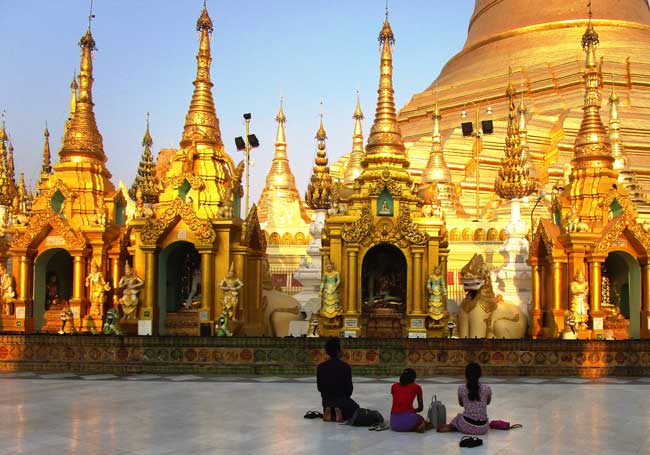
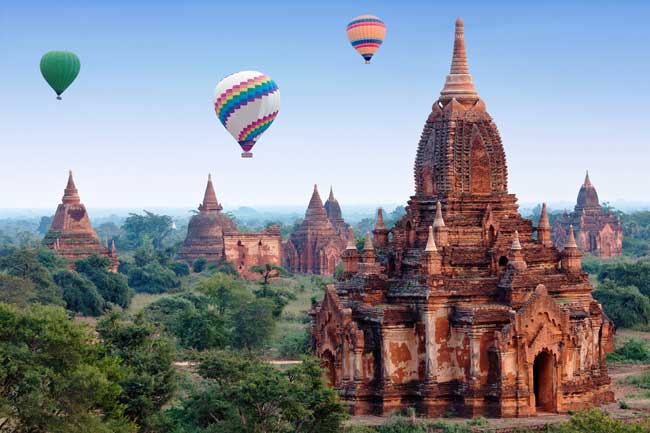
There is very little that can entice me to get up at 4 a.m., but how often do you get a chance to bathe a Buddha?
And not just any Buddha, but one that the actual real Buddha is said to have embraced.
Travel in Myanmar (Burma)
The statue at Maha Muni Pagoda in Mandalay, Myanmar is believed to be one of only five likenesses of Buddha created during his lifetime.
And the daily cleansing ritual for the hundreds of pilgrims who attend is both literal and spiritual. It’s just one of the many unusual experiences embodied in Myths and Mountains’ Myanmar Odyssey Tour.
But the face that Myanmar – formerly known as Burma – is a beautiful and fascinating country that deserves to be visited and appreciated cannot be considered in a vacuum.
The current bloodshed in the northern Rakhine Province where Muslim refugees are either being persecuted or are themselves Bangladesh terrorists, depending upon whom you ask, is part of the equation. But more on that later.

Yangon’s Shwedagon Pagoda
Starting our travel in Myanmar with a visit to Yangon’s Shwedagon Pagoda was like beginning a trip to Switzerland at the top of the Alps.
There’s only one way to go after that, no matter how beautiful the descent. Built in 525 B.C., the immense complex is overwhelming to navigate and disarming to reflect upon – except for the escalators.
They were a surprise. Very prescient folks, I thought, some 2600 years ago. It was hard not to feel humbled by the mystique, magic and magnificence of the cosmically vast structure.
We were invited to participate in the nightly candle lighting ceremony, said to promote longevity. We were at first quite honored – until we realized that the expectation was that we would light all 1000 wicks.
Fortunately, other visitors chose to participate in the process. Otherwise, we would still be there.
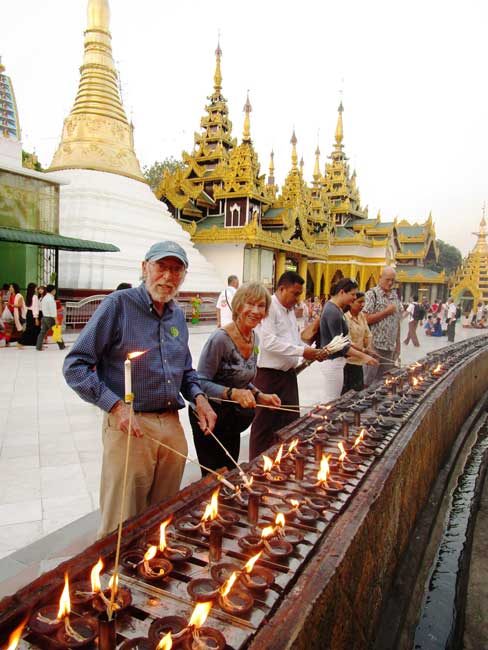
The many shrines, pagodas, temples, stupas and monasteries that followed continued the sense of awe embodied in the attitudes of both the faithful and the infidels who visit there.
Golden pagodas are as plentiful as the Golden Arches here, and there are stupas on every street corner instead of Starbucks.
Some pagodas are so lit up with gold-leaf engravings and flashing neon lights that I momentarily thought I might have been at a Disneyworld Buddhaland exhibit.
It was sort of the sacred bordering on the sacrilegious. Then humbled returned.
Shan State
A visit to Shan State, home to 34 minorities, all of whom have different cultures, language, foods and clothes, boasted a much more other-worldly and ethereal terrain than Yangon.
If, as our guide Willy kept reminding us, Myanmar has been so “isolated” – always conveyed in a conspiratorial whisper – here the feeling was even more remote.
Just the presence of so many water buffalo let us know we were in another world.
Perhaps that’s why stopping at a vineyard for a wine tasting seemed totally incongruous, but I overcame my initial surprise to happily indulge.
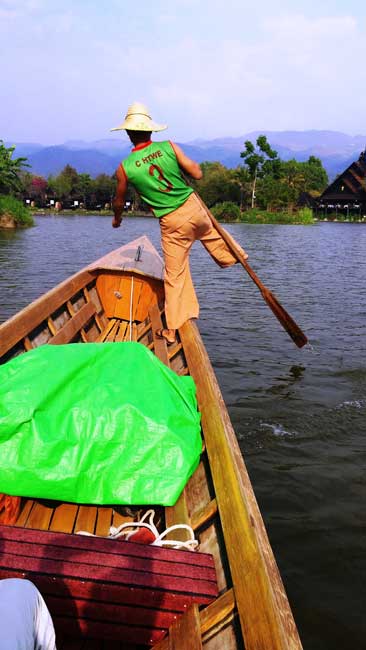
Inle Lake
A visit to Inle Lake was more in keeping with the area. With its serpentine series of canals navigated by long, narrow boats, Inle is reminiscent of Venice and its gondolas, with an equal amount of commerce conducted on water.
But even out-Venicing Venice, the houses, shops and schools are all on stilts – plus floating gardens missing in the Italian city. The hill tribe villages as well are very different from Venice’s cosmopolitan vibe.
Nor have I ever seen a gondolier steer his boat or catch a fish with one leg wrapped around an oar, an amazing feat for which the Inthas are famous.
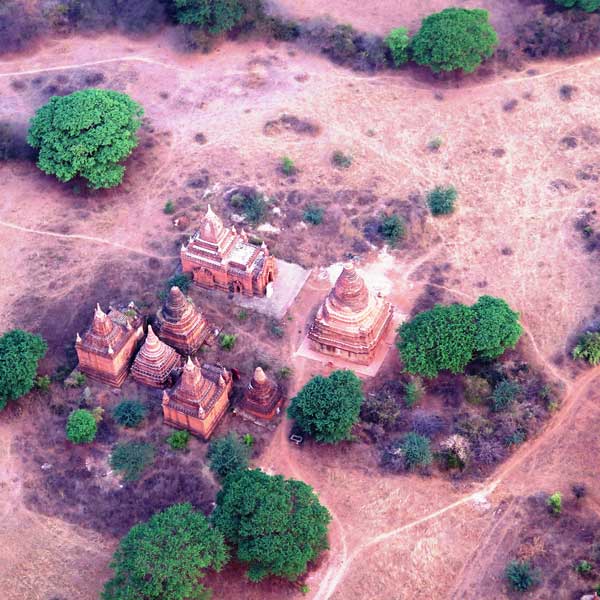
If every pagoda, shrine and stupa you visit on the ground is impressive, imagine floating over 2200 of them in a hot air balloon.
Such was the glorious adventure in Bagon. It was like watching over them all from heaven if only Buddha believed in heaven. Although, at this point, with my eyes glazing over at the mere mention of another pagoda.
The thought of actually having to visit any of them once back on the ground made me want to stay in the balloon indefinitely. The champagne breakfast awaiting us perked me up.
Fortunately, there is a lot more to appeal to visitors beyond pagodas. The local markets, small villages and contacts with people leading their everyday lives, usually in the form of making something by hand, greatly contributed to the experience.
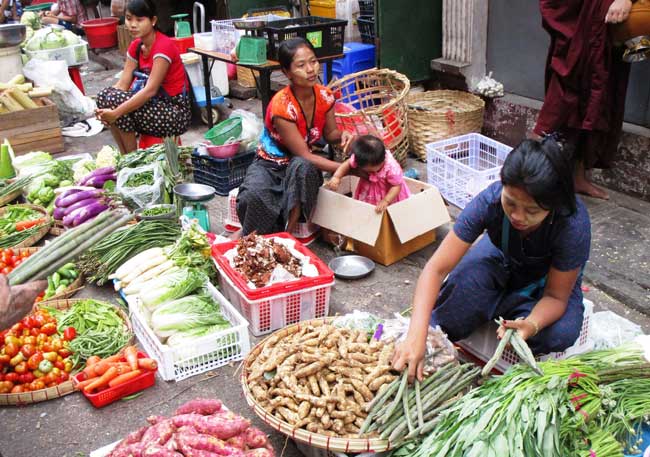
Markets in Myanmar
The story of everyday life was everywhere. And everywhere people were making things by hand, often out of materials which are themselves hand-made.
We visited a shoemaker and his family – ironically one of few places we didn’t have to remove ours, a de rigueur exercise at every pagoda.
He is the only person in Myanmar to make shoes for people with disabilities, by hand of course.
We saw silver smiths, weavers and lacquer workshops, a parasol factory, a textile workshop, a bronze casting arena, and sellers of jade and teak furniture.
The labor-intensive levels of individual craftsmanship was awe-inspiring.
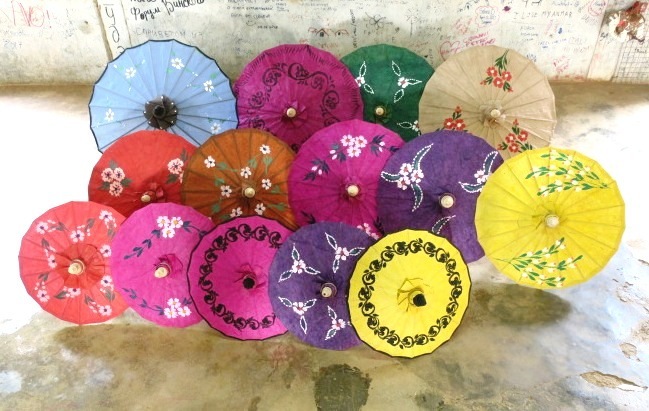
It was like watching God individually mold the different segments of the moon over a month’s time.
Then painting each night’s lunar orb with different brushes tinged with hues of gold and yellow, red and white with painstaking precision. That was the level of Myanmar craftsmanship.
Our local connection continued at a street-long Jade Market comprised of huge slabs of Jade not yet chiseled to the tiniest of stones to a comparably-sized market of marble with statues, not surprisingly mostly of Buddhas, in every stage of development.
We watched workers carving, scraping, hammering, polishing, painting, washing blocks and blocks of stone, populated by pure white images of various sizes.
Then it was on to another workshop in a different medium – this time wood carving. More hammering – also whirring, smoothing, tapping, pounding, appliquéing – and this time Buddha had company; we found many animals, women in prayer and other decorative items made of teak.
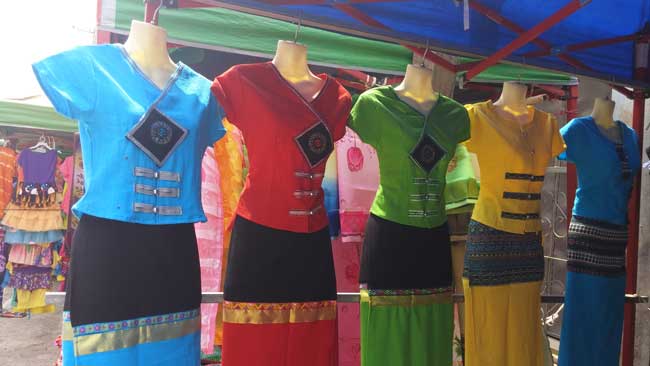
More everyday life was evident on Yangon’s Circular train which takes workers, students, vendors, shoppers to wherever they need to be for a mere 30 cents for a 3-hour round trip.
The fact that the train we were waiting for arrived on the other side of the platform fazed no one, so naturally, we just crossed the tracks. In the States, we’d be arrested – or worse, dead.
The train was rundown and crowded, but cheap and functional, not unlike the markets. Rumor has it that all modes of transportation are being renovated under Aung Sun Suu Kyi, known affectionately to the locals as “The Lady.”
A young boy walked the aisles selling strawberries, limes, mangoes and oranges, for 50 cents – like a roving supermarket.
And to think on DC’s Metro, we can’t even bring our own food aboard. This exposure to a slice of life in Myanmar brought with it multiple slices of fruit, as well.
And more fruit, as well as every other aspect of the Burmese diet, showed up at the local markets which were teeming with people selling and cooking all kinds of foods and trinkets.
The babble of unfamiliar background noises lent its own exotic flavor to the compendium of other more tangible flavors.
Every inch on both sides of the narrow street, as well as right down its center, was covered with all kinds of veggies and meats and pasta, some familiar, some unrecognizable, which is true of everything we saw.
Negotiating among the throngs of people and produce presented its own challenges. Vendors sat on their haunches for hours in positions I suspect we would find difficult maintaining for more than a minute.
From monk to merchant, jade cutter to parasol maker, street vendor to silversmith, the people of Myanmar added a rich diversity to a country known primarily for its many stunning edifices devoted to Buddha and his followers.
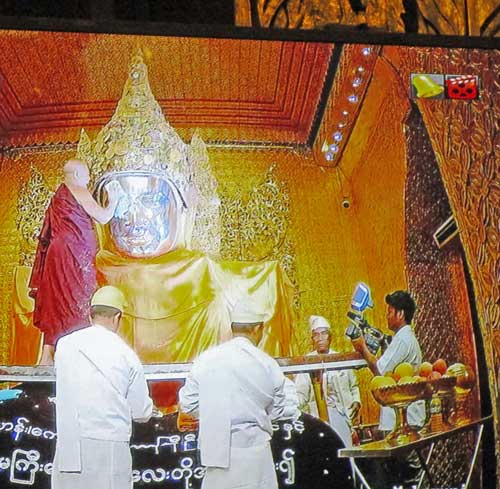
Rakhine Province
No article on travel in Myanmar can forgo a discussion on Rakhine Province. Over the last 10 years, Myanmar has been emerging from the Dark Ages to flirting with democracy, with the election, despite military rule, of Aung Sun Suu Kyi.
Now with the crackdown on the Rohinhga Muslims, the country is veering from the cusp of a tourism boom to being a pariah throughout worldwide media.
Prior to the trip, we were, of course, immersed in the worldwide condemnation of the alleged military atrocities visited upon the Muslim population in Rakhine Province and the resultant censure of the country’s first democratically-elected leader.
But the many Burmese I spoke to, not surprisingly, have a very different take. The Muslim refugees are either being persecuted or are themselves Bangladesh terrorists, depending upon whom you ask.
In a very over-simplified form, many say that the Rohingya Muslims – self-named and not recognized by the Burmese – are Bangladesh terrorists who want to take over Rakhine Province and make it their own state.
Many here claim that they shot up multiple police stations and have terrorized the Myanmar populace, and the military are only acting in self-defense. In addition, they say, Myanmar is a very poor country that cannot afford the education, medical care and housing of 700,000 illegal immigrants who provide no economic benefit.
And they want them to go back to Bangladesh where they belong. The U.N. and world media, they say, have gotten the situation all wrong. I think “Fake News” is the term they used.
As a visitor, it’s very hard to wrap one’s head around all the information, while also questioning just where all this information comes from.
Meanwhile, on the other side, Aung San Suu Kyi seems to be much beloved and has done a lot for the country in two years. Parks are now free to locals where before they were not; education as well.
Infrastructure changes are apparent; trains and buses have been modernized and made very affordable; corruption among the governing generals has been lessened; the economy has improved and religious constrains lifted.
Nonetheless, she is powerless, we were told, against the military which is pretty much still in control.
Clearly this is a country very much in transition.
No matter which perspective you accept, the more important question for tourists is whether to visit or not, especially when safety is not an issue as is the case here.
What is always true, when dealing with a government whose policies you reject, it is never the politicians who suffer when tourism decreases – it is always the people: the tour guides, hotels, restaurants, vendors and shopkeepers.
Myanmar has so much beauty and wonder and fascinating culture to offer that it is not only the country that will suffer if tourism declines, but so too the many travelers who may choose not to experience this magical, mystical, memorable journey.
If You Travel to Myanmar
For more information, visit https://mythsandmountains.com/trip/myanmar-odyssey-bagan-inle-monywa-ngapali-and-beyond.
Author Bio: Fyllis Hockman is a multi-award-winning travel journalist who has been traveling and writing for over 30 years – and is still as eager for the next trip as she was for the first. Her articles appear in newspapers across the country and websites across the internet.
- How to Renew a US Passport Quickly and Affordably - April 19, 2024
- 6 Reasons to Visit Portland, Maine (+ Travel Tips) - April 18, 2024
- Cruising with Discovery Princess on the Mexican Riviera - March 30, 2024
